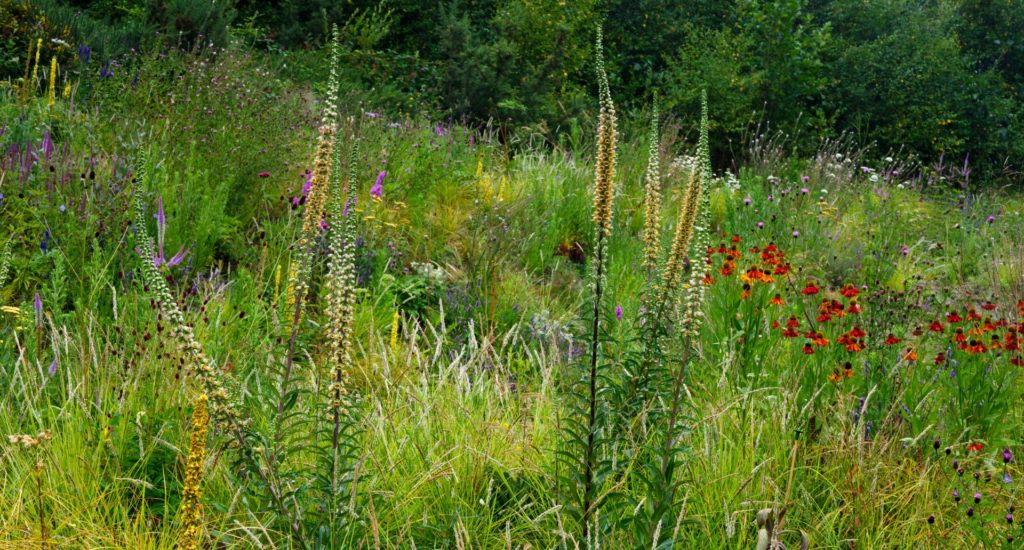‘Art for insects’ could help save pollinators

Pollinator Pathmaker Eden Project Edition. Photo Royston Hunt. Courtesy Alexandra Daisy Ginsberg Ltd
Gardens can become “living artworks” to help prevent the disastrous decline of pollinating insects, according to researchers working on a new project.
Pollinator Pathmaker is an artwork by Dr Alexandra Daisy Ginsberg that uses an algorithm to generate unique planting designs that prioritise pollinators’ needs over human aesthetic tastes.
Originally commissioned by the Eden Project in Cornwall in 2021, the general public can access the artist’s online tool (www.pollinator.art) to design and plant their own living artwork for local pollinators.
While pollinators – including bees, butterflies, moths, wasps, ants and beetles – are the main audience, the results may also be appealing to humans.
Pollinator Pathmaker allows users to input the specific details of their garden, including size of plot, location conditions, soil type, and play with how the algorithm will “solve” the planting to optimise it for pollinator diversity, rather than how it looks to humans.
The new research project – led by the universities of Exeter and Edinburgh – has received funding from UK Research and Innovation as part of a new cross research council responsive mode scheme to support exciting interdisciplinary research.
The project aims to demonstrate how an artwork can help to drive innovative ecological conservation, by asking residents in the village of Constantine in Cornwall to plant a network of Pollinator Pathmaker living artworks in their gardens. These will become part of the multidisciplinary study.
“Pollinators are declining rapidly worldwide and – with urban and agricultural areas often hostile to them – gardens are increasingly vital refuges,” said Dr Christopher Kaiser-Bunbury, of the Centre for Ecology and Conservation on Exeter’s Penryn Campus in Cornwall.
“Our research project brings together art, ecology, social science and philosophy to reimagine what gardens are, and what they’re for.
“By reflecting on fundamental questions like these, we will empower people to rethink the way they see gardens.
“We hope Pollinator Pathmaker will help to create connected networks of pollinator-friendly gardens across towns and cities.”

Dr Ginsberg said: “Pollinator Pathmaker is an artwork for other species that has been growing internationally. This exciting new research will help us better understand how and why it works, for both pollinators and people.
“The ambition for Pollinator Pathmaker is to create the world’s largest climate-positive artwork. This research will show how art can support conservation and interdisciplinary innovation.”
“How will people relate to their gardens if they’re designed for pollinators rather than people?” is a question Professor Jane Calvert (University of Edinburgh) will explore in the project. This sociological work will be informed by philosophical reflections on art, nature and our relationship with the nonhuman world, led by Professor John Dupré at the University of Exeter.



